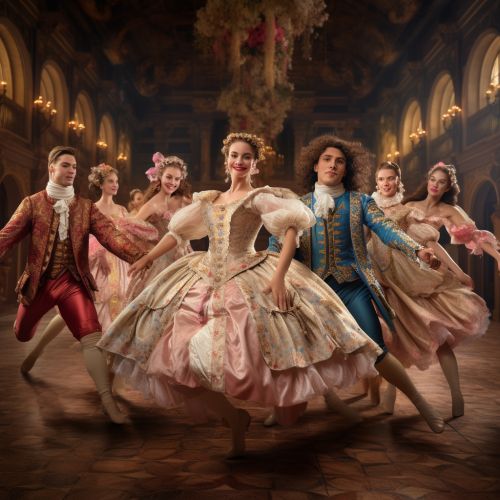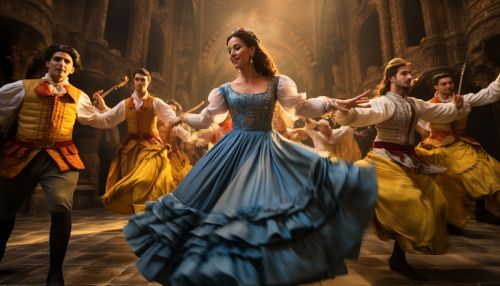Baroque dance
Origins and Development
Baroque dance is a form of historical dance that was popular during the Baroque period in Europe, from the late 16th century to the mid-18th century. The term "Baroque" is derived from the Portuguese word "barroco", meaning "misshapen pearl", a term that was initially used pejoratively to describe the ornate and complex style of art and music that characterized this period.


The development of Baroque dance was closely linked to the social and political changes of the time. The rise of the courtly society in the 17th century, with its emphasis on etiquette and decorum, led to the creation of formalized dance forms that were used as a means of social display and political negotiation. The dances were often performed in grand ballrooms and were accompanied by elaborate music, costumes, and scenery.
Characteristics
Baroque dance is characterized by its elegance, grace, and precision. The movements are typically slow and controlled, with a strong emphasis on posture and alignment. The dancers often perform intricate footwork and elaborate turns, and the dances are usually performed in a formal and structured manner.
The dance forms of the Baroque period were highly varied, ranging from the stately minuet and the lively gavotte to the energetic bourrée and the passionate sarabande. Each dance had its own specific steps, rhythms, and patterns, and they were often performed in a specific order to create a balanced and harmonious suite.
Influence and Legacy
The influence of Baroque dance can be seen in many aspects of modern dance. The use of turn-out (the outward rotation of the legs from the hips), the emphasis on vertical alignment, and the concept of dance as a form of artistic expression are all elements that have their roots in Baroque dance.
Furthermore, many of the dance forms that were popular during the Baroque period, such as the minuet and the gavotte, have been incorporated into the classical ballet repertoire. The ballet technique itself, with its emphasis on grace, precision, and control, is heavily influenced by the principles of Baroque dance.
Baroque Dance Today
Today, Baroque dance is often performed by historical dance groups and at period reenactment events. It is also studied by dance historians and scholars as a way to gain insight into the social and cultural practices of the Baroque era.
In addition, there has been a resurgence of interest in Baroque dance in recent years, with many dance companies and schools offering classes and workshops in this style. This has led to a renewed appreciation for the beauty and complexity of these historical dance forms.
